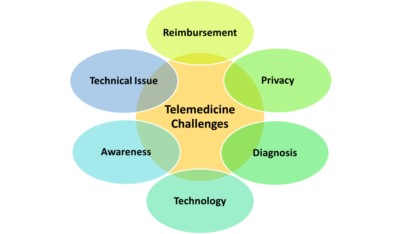Table of Contents
Promoting telemedicine and virtual care services may be the solution you need if you’re looking for ways to improve access to healthcare. These services use technology to connect healthcare providers with patients, allowing for remote consultations, diagnoses, and treatment. Telemedicine and virtual care services are particularly useful for patients who live in rural areas, have mobility issues, or simply prefer the convenience of remote consultations.

During the COVID-19 pandemic, telemedicine and virtual care services have become even more important. Many patients were hesitant to visit healthcare facilities in person due to the risk of exposure to the virus. By offering remote consultations, healthcare providers continued to offer their services while minimizing the risk of infection. With the COVID-19 pandemic being an excellent case study, telemedicine and virtual care services can help to reduce the burden on healthcare facilities and patients by allowing convenience.
If you’re a healthcare provider, promoting telemedicine and virtual care services can help you reach a wider audience and improve patient outcomes. By offering remote consultations, you can connect with patients who may not be able to visit your facility in person. In addition, telemedicine and virtual care services can help to reduce costs and improve efficiency, allowing you to provide high-quality care to more patients.
1. Overview of Telemedicine
Definition and Scope
Telemedicine refers to the use of telecommunication technology to provide healthcare services remotely. It involves the use of video conferencing, mobile apps, and other virtual technologies to connect patients and healthcare providers. Telemedicine services allow patients to receive medical care from the comfort of their homes, without the need to travel to a healthcare facility.
Telemedicine and virtual care services have a wide scope of applications, including primary care, specialty care, mental health, and chronic disease management. Patients can consult with healthcare providers for a range of medical conditions, including minor illnesses, chronic conditions, and mental health concerns. Telemedicine services can also be used for preventive care, such as routine check-ups and health screenings.

2. Benefits of Telemedicine
Promoting telemedicine and virtual care services revolves around the convenient and cost-effective ways it provides in terms of receiving medical care without having to leave your home to physically see a doctor. Hence, telemedicine and virtual care services offer numerous benefits to both patients and healthcare providers as explained below.
Reducing Healthcare Costs
Telemedicine can help reduce healthcare costs for both patients and healthcare providers. By eliminating the need for in-person visits, telemedicine can reduce the cost of transportation, parking, and missed work for patients. Additionally, telemedicine can help reduce the cost of healthcare for providers by reducing the need for expensive medical equipment and facilities.
Improving Patient Outcomes
Telemedicine and virtual care services can lead to improved patient outcomes by providing patients with more convenient access to medical care. Patients who live in rural or remote areas can benefit greatly from telemedicine, as it can provide them with access to medical specialists who may not be available in their local area. Additionally, telemedicine can help reduce the risk of infection, as it eliminates the need for patients to travel to a medical facility.
Enhancing Healthcare Delivery
Telemedicine and virtual care services can enhance the delivery of healthcare by providing patients with more personalized care. It allows healthcare providers to monitor patients more closely and provide more timely interventions when needed. Additionally, telemedicine can help reduce the burden on healthcare providers by allowing them to see more patients in less time.
Overall, telemedicine is a valuable tool for promoting access to medical care and improving patient outcomes. By reducing healthcare costs, improving patient outcomes, and enhancing healthcare delivery, telemedicine is an essential component of modern healthcare.
3. Challenges and Solutions
Telemedicine and virtual care services have the potential to revolutionize healthcare delivery, but they also face several challenges that need to be addressed. Here are some of the most significant barriers to the adoption of telemedicine and virtual care services, along with potential solutions:

Technical Barriers
One of the most significant challenges facing telemedicine and virtual care services is the technical infrastructure required to support them. Many healthcare providers lack the necessary hardware, software, and internet connectivity to offer these services effectively. Additionally, patients may not have access to the technology needed to participate in telemedicine visits.
To address these technical barriers, healthcare providers must invest in the necessary hardware, software, and internet connectivity to support telemedicine and virtual care services. Additionally, providers can partner with technology companies to develop and implement telemedicine solutions that are easy to use and accessible to patients.
Regulatory Hurdles
Telemedicine and virtual care services are subject to a complex web of regulations at the federal and state levels. These regulations can be confusing and difficult to navigate, which can discourage healthcare providers from offering these services.
To overcome these regulatory hurdles, healthcare providers must stay up-to-date on the latest telemedicine regulations and work with legal experts to ensure that their practices are compliant. Additionally, providers can advocate for changes to the regulatory environment to make it easier to offer telemedicine and virtual care services.
Patient Privacy and Data Security
Telemedicine and virtual care services involve the transmission of sensitive patient information over the Internet, which raises concerns about patient privacy and data security. Patients may be hesitant to participate in telemedicine visits if they are not confident that their information will be kept secure.

To address these concerns, healthcare providers must implement robust data security measures, such as compliance with the Health Insurance Portability and Accountability Act (HIPAA), to protect patient information. This may include using secure communication channels, encrypting data, and implementing access controls to limit who can view patient information. Additionally, providers can educate patients about the security measures in place to reassure them that their information is safe.
Overall, while there are several challenges facing the adoption of telemedicine and virtual care services, these barriers can be overcome with the right strategies and investments. By addressing technical barriers, regulatory hurdles, and patient privacy and data security concerns, healthcare providers can offer these services effectively and improve patient outcomes.
4. Technologies in Telemedicine
Telemedicine is a rapidly growing field that uses technology to provide remote healthcare services. With the rise of virtual care, there are several technologies that are being used to provide telemedicine services. Here are some of the most commonly used technologies in telemedicine:
Communication Platforms
Communication platforms such as video conferencing, chatbots, and messaging apps are being used to connect healthcare providers with patients. These platforms allow for real-time communication between patients and healthcare providers, making it easier for patients to access care from the comfort of their own homes. Video conferencing, in particular, is being used to provide virtual consultations, follow-up appointments, and even remote surgeries.

Wearable Health Devices
Wearable health devices such as smartwatches, fitness trackers, and blood glucose monitors are being used to collect patient data remotely. This data is then transmitted to healthcare providers who can use it to monitor patients and make informed decisions about their care. Wearable health devices are particularly useful for patients with chronic conditions such as diabetes, heart disease, and hypertension.
Artificial Intelligence
Artificial intelligence (AI) is being used to analyze patient data and provide personalized treatment recommendations. AI algorithms can analyze large amounts of patient data to identify patterns and make predictions about patient outcomes. This information can then be used by healthcare providers to develop personalized treatment plans for their patients.
Overall, these technologies are helping to revolutionize the way healthcare is delivered. By providing remote access to care, telemedicine is making it easier for patients to get the care they need, when they need it. As technology continues to evolve, we can expect to see even more innovative solutions in the field of telemedicine.
5. Implementing Telemedicine Services
Telemedicine is a rapidly growing field that has become increasingly important in recent years. Implementing telemedicine services can be a complex process, but with the right planning and execution, it can be a valuable asset to any healthcare organization.
Strategic Planning

The first step in implementing telemedicine services is strategic planning. This involves identifying the goals of the telemedicine program, determining the resources required, and developing a plan for implementation. A successful telemedicine program requires planning both clinical and non-clinical aspects of care delivery. Having a checklist handy can help you through the planning process.
Training Healthcare Providers
Training healthcare providers is essential for the success of a telemedicine program. Providers need to be trained on how to use the technology, how to conduct virtual visits, and how to document patient encounters. It’s also important to train providers on how to communicate effectively with patients in a virtual setting. Providers should be encouraged to ask open-ended questions and actively listen to patients.
Patient Education and Engagement
Patient education and engagement are critical to the success of a telemedicine program. Patients need to be educated on how to use the technology and what to expect during virtual visits. It’s also important to engage patients in their care by encouraging them to ask questions and participate in decision-making. Patient engagement can be enhanced through the use of patient portals, online education materials, and virtual support groups.
6. Legal and Ethical Considerations
When promoting telemedicine and virtual care services, it is important to consider the legal and ethical implications of these practices. Here are some key factors to keep in mind:

Licensing and Credentialing
When providing telemedicine services, it is important to ensure that all healthcare providers are properly licensed and credentialed in the state where the patient is located. This can be a complex process, as licensing and credentialing requirements can vary widely between states. It is important to stay up-to-date on the latest regulations and requirements in each state where you plan to offer telemedicine services.
Informed Consent
Informed consent is an essential component of any medical treatment, and this is no less true for telemedicine services. Patients must be fully informed about the risks and benefits of telemedicine, as well as any potential limitations or drawbacks. This includes information about the security of the telemedicine platform, the qualifications of the healthcare provider, and any potential technical issues that could arise during the session.
Reimbursement Policies
Reimbursement policies for telemedicine services can vary widely between insurance providers and government programs. It is important to be aware of these policies and to ensure that you are properly billing for your services. This may require additional documentation or coding, depending on the specific requirements of the payer.

Overall, while telemedicine and virtual care services can offer many benefits to patients and providers alike, it is important to approach these practices with caution and to ensure that all legal and ethical considerations are properly addressed. By staying informed and up-to-date on the latest regulations and requirements, you can help ensure that your telemedicine services are both safe and effective.
7. Future of Virtual Care
As technology continues to advance, the future of virtual care is bright. Telemedicine and virtual care services have already shown their potential in providing convenient and accessible healthcare to patients. In this section, we will explore some of the emerging trends, global telemedicine market, and innovation and research in the field of virtual care.
Emerging Trends
One of the emerging trends in virtual care is the use of wearable technology. Wearable devices such as smartwatches and fitness trackers can monitor vital signs and other health metrics, which can be used by healthcare providers to remotely monitor patients. This technology can be particularly useful for patients with chronic conditions who need continuous monitoring.
Another trend is the use of artificial intelligence (AI) in virtual care. AI can be used to analyze patient data and provide personalized treatment plans. This can help healthcare providers make more informed decisions and improve patient outcomes.
Global Telemedicine Market
The global telemedicine market is growing rapidly and is expected to continue to do so in the coming years. According to a report by Grand View Research, the global telemedicine market size was valued at USD 41.4 billion in 2020 and is expected to expand at a compound annual growth rate (CAGR) of 15.1% from 2021 to 2028.

The COVID-19 pandemic also accelerated the adoption of telemedicine. Patients are now more comfortable with virtual care services, and healthcare providers are increasingly relying on telemedicine to provide care to their patients.
Innovation and Research
Innovation and research in the field of virtual care are ongoing. Researchers are exploring new ways to use technology to improve patient outcomes and make healthcare more accessible. For example, researchers are developing new telemedicine platforms that can be used in remote and underserved areas.
Innovation is also happening in the field of virtual reality (VR). VR can be used to simulate medical procedures and provide training for healthcare providers. This technology can also be used to provide therapy for patients with mental health conditions.
In conclusion, the future of virtual care is promising. As technology continues to advance and healthcare providers, as well as patients become more comfortable with virtual care services, we can expect to see more innovation and growth in this field.







